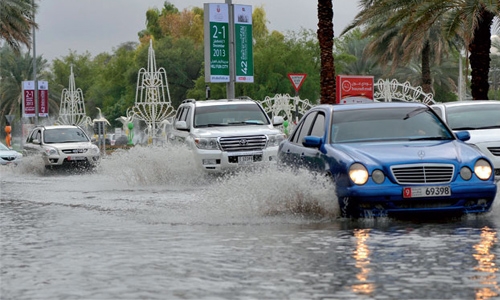Five tips for driving in rains
Driving in rain is a challenge not everyone can master. Not only does it need deft handling of the vehicle, it also requires your vehicle to be in top condition.
Most accidents during rain happen because drivers are not able to adapt their driving styles to suit wet conditions.
Here are some simple steps drivers must take when driving
1. Check your tyres: Tyres that work well in dry conditions may not work on wet roads. Make sure the treads of the tyres are at least 3-4 mm deep. Anything less and the car may skid.
Treads prevent water from accumulating under the tyre and help maintain grip. The deeper the tread, the safer it is. Tyres with little or no tread risk aquaplaning, a phenomenon when water forms a film under the tyre, causing the rubber to lose contact with the road. This can result in loss of control of the vehicle.
Also, it is important to ensure that the tyres are adequately inflated according to the manufacturer's recommendations. And if you are not used to getting your spare tyre checked and inflated regularly, this is the right time to do so.
Whenever possible, avoid driving over puddles or stagnant water.
2. Check your brakes: Your life depends on them, so make sure they are in top condition round the year, especially during monsoon. Wet roads greatly increase braking distance, so you have to apply the brakes well in advance. Also, brake shoes won't grip wet wheels as effectively as they would otherwise. Therefore, it is extremely important to get your brakes checked before the monsoon begins.
If you have been driving on water-logged roads, it's best to stop your car at a safe place and pump your brakes a few times before resuming your journey. It will dry out the wet brake shoes and prevent slipping.
3. Wipers and windscreen: The wipers are among the least used devices in a car, and any fault with an unused device is likely to go unnoticed for a very long time, until it starts pouring when you are in the middle of your journey and you turn the wipers on, only to find them screeching and grinding against the windscreen, scratching it in a huge arc, the rubber coming off from the clips and dangling in front of your eyes. Therefore, make sure you get your wipers checked periodically. Always wipe them with a wet cloth and never allow dust to settle on them.
And never, ever, use your windscreen washer nozzle to spray water on a dusty windscreen and then turn on the wiper. The dust particles will get caught in the rubber and scratch the glass and at the same time will break the uniformity of the rubber edge. This will cause the rubber to leave behind streaks of water on the glass. Therefore, it is always advisable to dust the windscreen with a dry cloth first and then wipe it clean with a wet cloth before starting your journey, no matter which season.
A scratched windscreen with scatter light from oncoming traffic and will make driving at night difficult. It is also important to ensure that the glass is clean on the inside too, free from fingerprints or any other smudges. Newspapers are wonderful glass cleaners. So always keep one handy.
4. Lights: Make sure the headlamps, the tail lamps and the blinkers are working properly. Also make sure that the headlamp glass is clean and free from any smudges. On a rainy day, your headlamps will receive most of the spray from the car in front of you, and in case the rain is not heavy, all that dirt may accumulate on the headlamp glass and greatly reduce the effectiveness of the lights.
Most cars these days allow the driver to control the angle of the headlamps. It's best to use a low angle while driving in the rain. A wet windscreen with wipers running will hugely distort the light from oncoming traffic, making it extremely difficult for the driver to pinpoint your location. Therefore, it is advisable to use fog lamps instead. If your car doesn't have fog lamps, use low beam at a low angle. It will make it easier for the oncoming driver to spot you.
5. Body care: Water causes metal to rust. Therefore, make sure all the scratches on your car are either painted or at least polished with wax. You can also get anti-rust treatment done on the underbody of your automobile. You may also consider getting an underbody rubber coating for your car. Pay special attention to the rubber lining on the doors and grease all the hinges. Paint erodes fast on moving joints, exposing them to rust.
Related Posts

